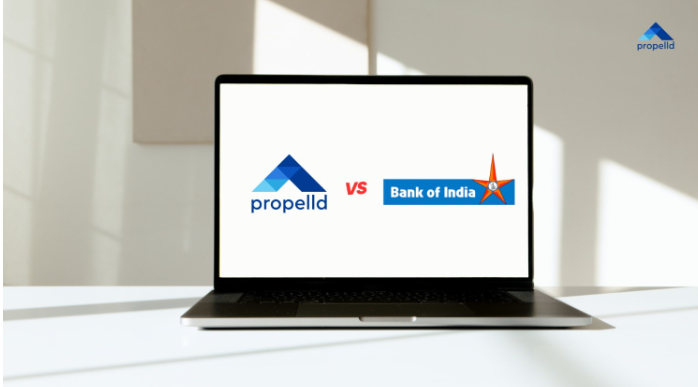Starting your educational journey shouldn't feel like solving a complex puzzle. When it comes to education loans, understanding the principal amount is your first step toward making smart financial decisions. This guide breaks down everything you need to know about principal amounts in simple, digestible terms. Let's turn loan confusion into loan confidence!
What is Principal Amount?
The principal amount is the actual money you borrow from a bank or financial institution to fund your education. Think of it as the foundation of your loan - it's the original sum before any interest is added.
In education loans, the principal amount covers:
- Tuition fees for your course
- Living expenses during studies
- Books and supplies you'll need
- Travel costs for studying abroad
- Equipment like laptops or lab materials
The principal amount is different from the total amount you'll eventually pay back, which includes interest charges over time.
Let's Explain Principal Amount to a 7-Year Old
Imagine you want to buy a really expensive toy that costs ₹1,000, but you don't have enough pocket money. So you ask your parents to lend you ₹1,000.
That ₹1,000 your parents give you is like the principal amount - it's the actual money you borrowed.
Now, your parents say, "We'll give you the money, but you need to pay us back a little extra for being so nice!" That extra amount is like interest.
So if they ask for ₹1,100 back after a year, the ₹1,000 is still your principal amount (the toy money), and ₹100 is the extra thank-you money (interest).
In education loans, the bank is like your parents, and your college fees are like that expensive toy!
Understanding Principal Amount in Real Terms
How Principal Amount Works in Education Loans
When you apply for an education loan, the bank doesn't just hand you a blank check. They calculate your principal amount based on:
Academic Requirements:
- Course fees as per university admission letter
- Semester-wise fee structure
- Additional academic costs
Living Expenses:
- Accommodation costs
- Monthly living allowance
- Food and transportation
Geographic Factors:
- Domestic vs. international study costs
- Currency exchange rates for foreign education
- Cost of living in different cities
Real-Life Example: Meet Priya's Education Loan Journey
Priya takes an education loan of ₹10,00,000 at 12% interest per annum for 10 years.
Her monthly EMI comes to ₹14,347.
She ends up paying a total of ₹17,21,640, out of which ₹7,21,640 is interest.
Principal = ₹10,00,000, Interest adds up over time, so total repayment is much higher than the loan.
Types of Principal Amount Structures
Fixed Principal Amount
The borrowed amount remains constant throughout the loan tenure. Most education loans follow this structure.
Variable Principal Amount
Some loans allow you to borrow additional amounts during your course for unexpected expenses, increasing the principal.
Partial Principal Amount
You might choose to borrow only a portion of your total education costs, using savings or scholarships for the rest.
Factors Affecting Your Principal Amount
Course and Institution
- Premium institutions typically require higher principal amounts
- Professional courses like medicine or engineering cost more
- International education involves currency conversion risks
Student Profile
- Academic performance can influence loan approval
- Family income determines loan eligibility
- Collateral availability affects loan amount sanctioned
Market Conditions
- Interest rate fluctuations impact total borrowing costs
- Currency exchange rates for international students
- Economic policies affecting education loan schemes
Smart Decision Making for Principal Amount
Borrow Only What You Need
Calculate precisely: Don't overestimate your requirements. Every extra rupee borrowed costs you more in interest.
Create a detailed budget: List all expenses category-wise:
- Mandatory costs (tuition, books)
- Essential living expenses
- Emergency funds (10-15% buffer)
Compare Multiple Lenders
Interest rates vary significantly: A 1% difference in interest rate can save you lakhs over the loan tenure.
Processing fees matter: Some banks charge up to 2% of principal amount as processing fees.
Repayment flexibility: Look for options like step-up EMIs or part-prepayment facilities.
Consider Your Repayment Capacity
Future earning potential: Research average salaries in your chosen field.
Loan-to-income ratio: Ensure your future EMI doesn't exceed 40% of expected income.
Career stability: Some fields offer more job security than others.
Timing Your Loan Application
Apply early: Get pre-approval before admission to avoid last-minute stress.
Interest rate cycles: If possible, time your application during low-interest periods.
Currency considerations: For international education, monitor exchange rate trends.
Key Takeaways and Final Thoughts
Understanding your education loan's principal amount is crucial for making informed financial decisions. Remember that this borrowed sum is an investment in your future, but it requires careful planning and realistic assessment of your needs. The principal amount determines your monthly EMIs and total interest burden, so borrow wisely - neither too little that you struggle during studies, nor too much that repayment becomes overwhelming. Compare multiple lenders, understand all terms and conditions, and factor in your future earning potential before finalizing the principal amount. Smart borrowing today ensures a financially stable tomorrow, allowing you to focus on what matters most - your education and career growth.














.svg)